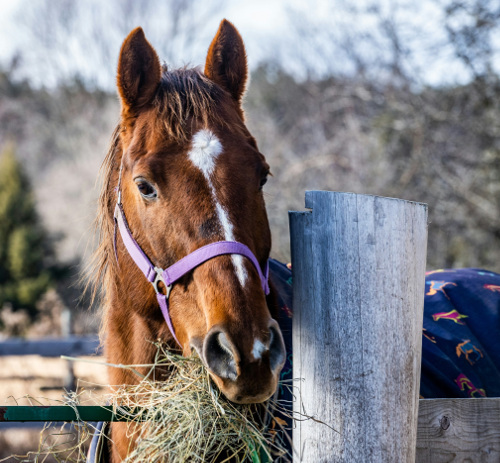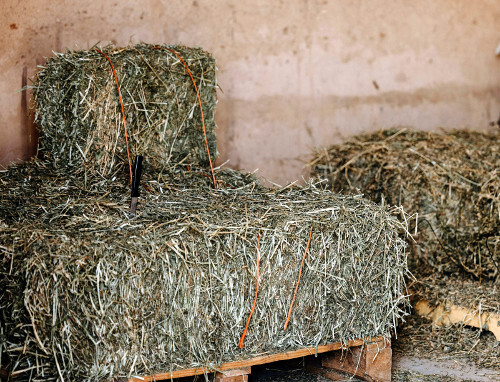Choosing the Right Hay for Your Horse

Choosing the Right Hay for Your Horse: A Straightforward Guide to Nutrition and Safe Feeding
Feeding the right hay is essential to your horse’s health. Different life stages, workloads, and seasons affect a horse's nutritional needs, and understanding hay types—and how to store them properly—helps prevent health issues and ensures your horse thrives.
Cool-Season Grass Hay Basics
Cool-season grasses—such as orchard grass, fescue, brome, reed canary grass, and Kentucky bluegrass—thrive in moist, temperate climates. These grasses are typically harvested in the spring and fall and offer moderate nutritional value compared to legumes. Protein levels range from 6% to 18%, calcium content is lower at approximately 0.2% to 0.5%, and energy values typically fall between 1.7 and 2.5 mega calories per kilogram.
First-cut grass hay is generally more mature at harvest, resulting in thicker, coarser stems. While this hay is less nutrient-dense, it is ideal for horses with lower maintenance needs or metabolic concerns. Because of its lower nutrient concentration, horses can consume more without risking excessive nutrient intake.
Second-cut grass hay, on the other hand, is typically softer, leafier, and richer in nutrients. This makes it well-suited for horses with higher nutritional demands, including performance horses, lactating mares, growing foals, and hard keepers. Its higher energy and protein content also make it a good choice during the winter months, when maintenance requirements increase.
Canadian hay, often a pure timothy blend, contains no orchard grass. Timothy hay provides adequate protein levels for most horses but lacks certain essential minerals such as zinc, copper, iodine, and occasionally selenium. If timothy hay is the primary forage in a horse’s diet, these mineral deficiencies should be addressed with appropriate supplementation.
Matching forage to your horse’s needs and environment is essential. During peak pasture season, when forage is lush and nutrient-dense, it’s important to reassess both the type and amount of hay being fed—particularly at night—to avoid an oversupply of nutrients that could impact health and performance.
What Hay Color Really Tells You
Many people judge hay quality by its color, assuming greener hay is better. While green hay does indicate higher vitamin A content, bleaching from sun or rain doesn’t always mean the hay is poor quality. What matters more is overall condition: a good smell, high leaf content, and the absence of mold, dust, or foreign materials. Also, keep in mind that weeds are green too—color isn’t everything.
Storing Hay Safely
How hay is stored can be just as important as what kind you feed. Hay should never be stored directly on the ground. Doing so increases the risk of contamination by rodents or wildlife, which can leave droppings that potentially transmit parasites linked to equine protozoal myeloencephalitis (EPM). Additionally, feeding hay that is dusty or moldy can cause serious respiratory problems. Inhaling mold spores or fine dust can inflame the horse’s airway and lead to a chronic condition known as heaves, or equine asthma. Storing hay in a dry, covered area, off the ground, and with good ventilation helps protect both your horse’s health and the hay’s nutritional value.
Bringing It All Together
Feeding the right hay means considering your horse’s age, workload, body condition, and even the season. Horses in heavy work or colder climates and lactating mares may need more nutrient-dense hay, while easy keepers or horses in light work do better on more mature grass hay with fewer calories. Focus on plant maturity rather than cut, and always store your hay properly to avoid health risks.

